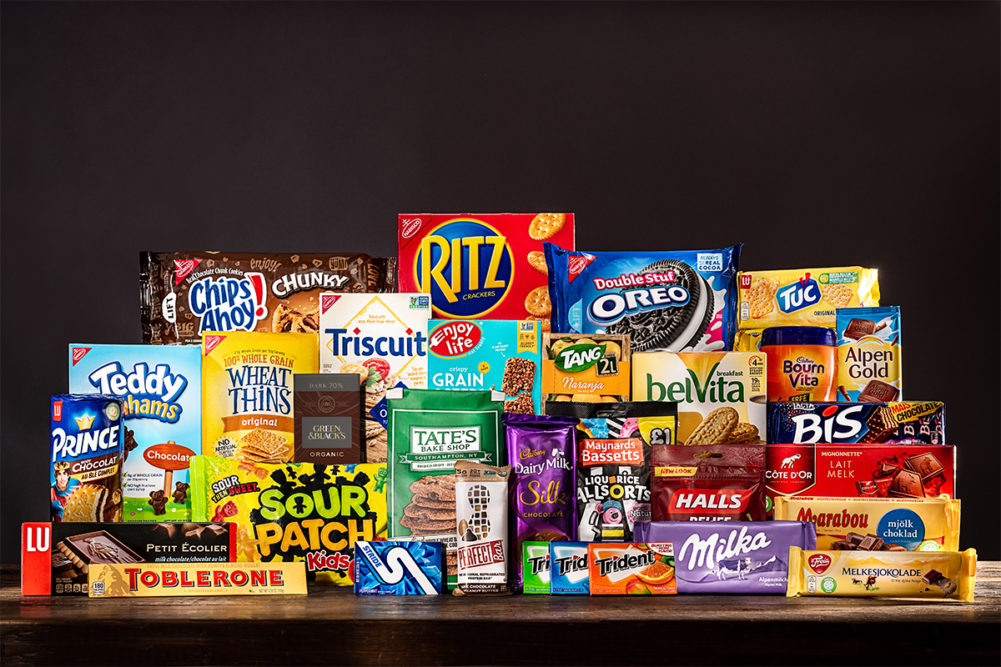CHICAGO — Fiscal year 2020 was a strong period for Mondelez International’s biscuits and chocolate businesses. In fiscal 2021, management is making investments in marketing and innovation to maximize growth and maintain market share gains achieved during the year.
“Biscuits grew nearly 9% for the year,” said Luca Zaramella, chief financial officer, on Jan. 28, during a conference call to discuss fiscal 2020 results. “North America was a big growth driver due to elevated demand and brand investment.”
Chocolate grew more than 3% for the year, and that growth included headwinds due to lockdowns and limited world travel retail.
The company’s overall growth rate for the year was negatively impacted by gum and candy, which were challenged by reduced on-the-go consumption and limited mobility due to lockdowns.
“We sustained the top-line momentum we have achieved since launching our strategy in 2018, delivering another year of 3% plus organic net revenue growth,” said Dirk Van de Put, chairman and chief executive officer. “This led to record market share gains as consumers chose our products and made us clear winners in our largest categories of biscuits and chocolate.”
Net income for the year ended Dec. 31, 2020, totaled $3.6 billion, equal to $2.48 per share on the common stock, down 8% from $3.9 billion, or $2.69 per share, in fiscal 2019.
Sales for the year rose to $26.6 billion from $25.9 billion the year prior.
The decline in net income partially was attributed to lapping a prior-year benefit from Swiss tax reform and costs associated with the company’s JDE Peet’s transaction.
Mr. Zaramella said management expects to achieve 3% net revenue growth in fiscal 2021 and to retain market share gains achieved during fiscal 2020.
“Biscuits and chocolate, from what we see today, should continue to do well in 2021,” he said. “But we will be lapping some elevated growth in 2020, particularly in developed markets and for biscuits. On the flip side, there should be some recovery of the categories and countries mostly impacted by COVID. We have been prudent in our assumptions, mostly for gum, as we expect that category to recover more slowly.”
Management expects adjusted earnings per share to be in the high-single digits on a constant currency basis and free cash flow to be greater than $3 billion.
Mr. Van de Put identified three tailwinds he believes will help the company maintain its momentum in fiscal 2021. The first is the belief biscuits and chocolate will continue to perform well.
“The second tailwind I would mention is that we have very solid momentum going into '21,” he said. “Our H2 growth rate was above 3%, and so we see that continuing. In H2, we also invested quite heavily.
“That would be the third tailwind for me, with a big step-up in working media. We are going to continue to do that in 2021, so that should also give us a push. And then, yes, we can't neglect that we will be lapping a weak year in gum and candy, in world travel retail in some of the smaller emerging markets. So, we believe that will help us also.”
In fiscal 2021, Mondelez International will be focusing on bigger innovation initiatives, as the company continues to focus on eliminating 25% of its stock-keeping units (SKUs), Mr. Van de Put said. The SKUs being eliminated account 2% to 3% of sales.
“Going forward, once we reach the (reduced SKU) level we are aiming for … we’re going to apply a very strict one in, one out approach to new products,” he said.
Over the next decade, Mr. Van de Put anticipates the company’s product portfolio will come into balance between items perceived as healthy and those perceived as indulgent. Product attributes they may target include portion control, natural, local sourcing and functional.
“You will see a very balanced approach in gradually introducing more health and wellness products from our side,” he said.
Mondelez experienced a strong fourth-quarter performance. Net income shot up 64% to $1.2 billion, equal to 81¢ per share, and compared favorably to the fourth quarter of fiscal 2019 when the company earned $733 million, equal to 51¢.
Sales for the quarter were $7.3 billion, up from $6.9 billion the year prior.
Management attributed the rise in quarterly net income to a net gain on equity method transactions.






